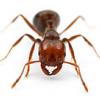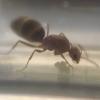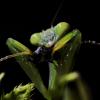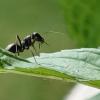Equipment:
- crafting knife
- scotch tape
- ruler that measures mm
- Red Vinyl: https://smile.amazon...2?ie=UTF8&psc=1
- Whatever flavor Test Tube you prefer
Instructions:
- measure out the circumference of the test tube, I did this by wrapping it in paper and marking where they connect
- measure your viewing area, I would recommend making it longer on both ends to support more or less water.
- Cut the vinyl to your measured dimensions
- make sure the test tube is clean and dry
- pull the adhesive cover off and affix to the test tube
- slowly roll the vinyl onto the test tube make sure to do this slowly press and roll to eliminate bubbles
When you are done, it might looks something like this. In this case I used a AC Test Tube as I like the adapters and tubing connection options, should you need to provide food or water later on
Picture of the Test Tube after being wrapped in red vinyl

Picture of Ant in the test tube (base Google Pixel 3 camera (no macro lens))
























